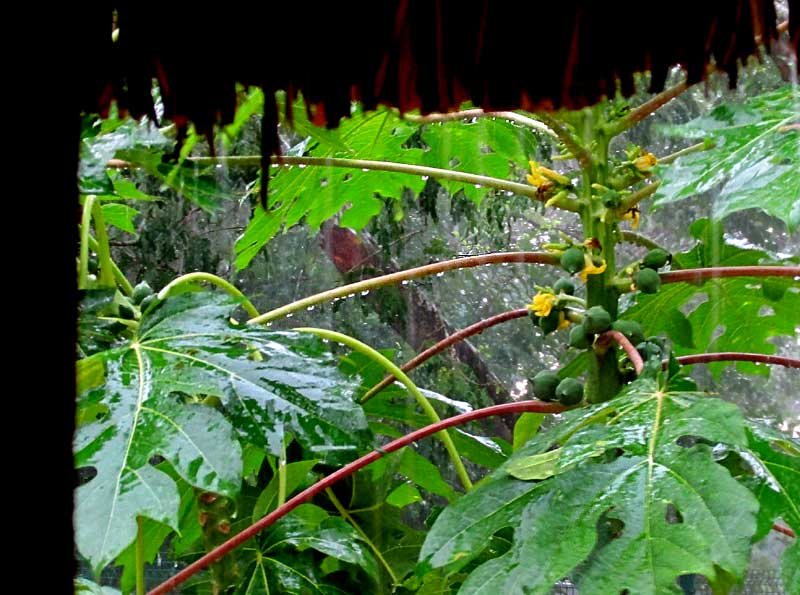Excerpts from Jim Conrad's
Naturalist Newsletter

from the August 23, 2015 Newsletter issued from Yuxunah, 20kms southwest of Chichén Intzá, Yucatán, MÉXICO
AFTERNOON STORMS
Nowadays most afternoons around 2:30 or so, the first boom of distant thunder pokes its way through the landscape's soul-stunning heat and humidity. More thunder follows almost immediately, and you wonder if somehow you missed the lead-up booms, or if somehow that first one changed atmospheric acoustics so that now even lesser thunderings are heard. If the thundering comes from the southeast, we can expect a good rain in maybe half an hour, but if it's from the northwest, probably the storm will move away as it develops and we won't get anything.
On the Internet weather page's current radar loop you can watch how these mid-afternoon, rainy-season storms pop up across the region. More or less concurrently they splatter randomly across the Peninsula, like mushrooms emerging after a rain. Sometimes the storms coalesce or develop into large, radar-red splotches that with other splotches move generally northwestward with their high winds and lots of rain. As dusk approaches they all dissipate as quickly as they had appeared.
When the rain begins around 3PM, usually I'm at the computer in the hut, working in shorts and no shirt. I ignore the first raindrops, for sometimes the storm just glances us, peppering us with a few drops and moving on. But if it's going to be a good rain, soon cold mist floats through the hut's door, landing on my sweaty back and shoulders, and it feels good.
If it looks like a good one is about to hit, I unplug the computer to keep it from being fried by lighting, and go watch the rain through the crack between the doors. I like watching rainwater stream off the roof's thatch, and seeing how fresh and green the plants outside look. If the storm passes right over us, often there's small hail that bounces off the ground looking like popcorn popping from the earth. At the height of our most recent downpour I photographed the drenched Wild Papaya outside the hut's door -- shown at the top of this page -- on which silvery droplets gathered along raspberry-colored petioles, and the big leaves shined with wetness, all framed by the hut's thatch roof and wooden door.
When the storm moved away, the rain ended and the air's coolness was delicious. All around the Community Center's compound you could hear Maya kids laughing and whooping, playing in puddles of cold water, or just running up and down the streets delighting in breathing cool, fresh air.
Something else I like about these afternoon storms is that they're perfectly normal for this part of the world at this particular season. It seems that for years I've only experienced extreme weather of one kind or another, and it was beginning to seem that Nature never again would be "normal" again. But, it seems to me that these afternoon storms we're having now are just right.